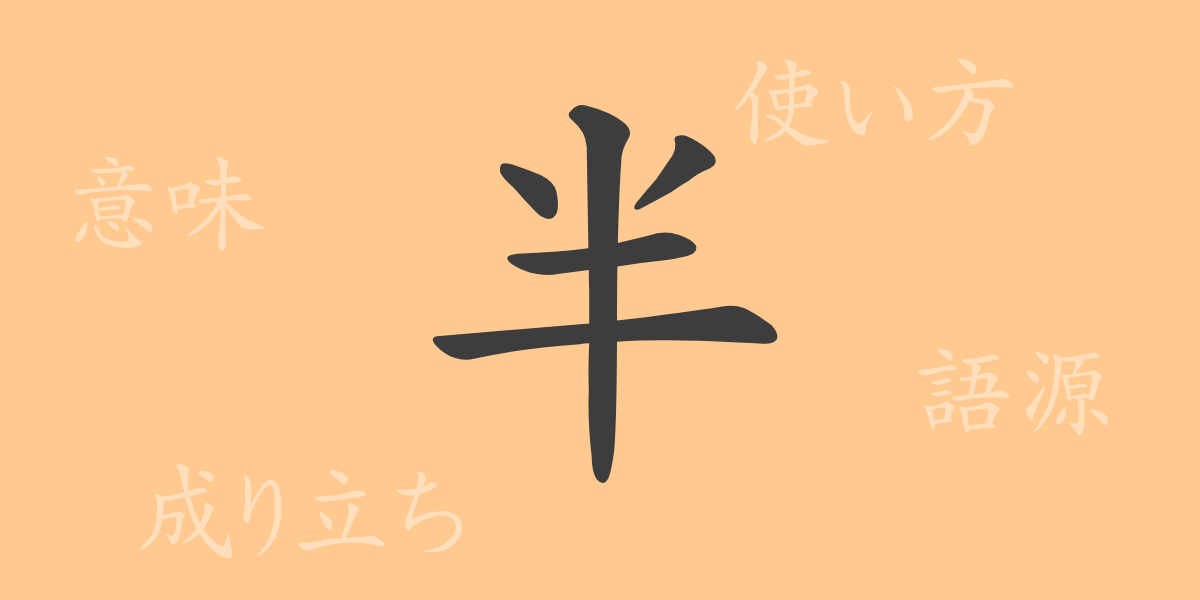Language is a treasure trove of culture and history, with deep meanings embedded even in a single character. The commonly used Japanese kanji “半” (はん) is frequently used in everyday life, possessing a richness of expression far beyond its simple shape. This article will take you on a journey to deepen your understanding of “半”, exploring its origins, meanings, and usages.
Origins of 半 (はん)
The kanji “半” (はん) has ancient roots, traceable back to oracle bone script. Originally derived from a pictograph meaning a split “piece”, it came to signify “half”. Though its form has evolved over time, the fundamental concept of dividing something into two equal parts remains unchanged, and it continues to be used as such.
Meaning and Usage of 半 (はん)
The character “半” (はん) means to divide something into two equal parts, or “half”. It is commonly used to denote numbers or quantities, as well as to describe time or proportions. “半” also thrives in metaphorical expressions and emphasis, enriching the Japanese language.
Pronunciation, Stroke Count, and Radical of 半 (はん)
The kanji “半” (はん) has distinctive features in terms of pronunciation and structure.
- Pronunciation: The on-reading is “ハン” (はん), and the kun-reading is “なか.ば” (なかば).
- Stroke Count: It consists of 5 strokes.
- Radical: The radical is “十” (じゅう).
Idioms, Phrases, and Proverbs Using 半 (はん) and Their Meanings
There are many idioms, phrases, and proverbs in Japanese that include “半” (はん), each with its unique meaning and nuance. For example, “半信半疑” (はんしんはんぎ, half belief and half doubt) describes a state of being partly skeptical yet somewhat believing; “半端ない” (はんぱない, extraordinary) denotes something exceptional; “半年” (はんとし, six months) refers to a period of six months. These expressions are wonderful examples of the rich expressiveness of the Japanese language.
Summary on 半 (はん)
The meanings embedded in a single kanji are profound and allow for a diverse range of expressions, far beyond what its simple lines might suggest. The character “半” (はん), while closely connected to our daily lives, teaches us about the depth of language. It is our hope that through this exploration, you have gained a renewed appreciation for the meaning and charm of “半”.

























